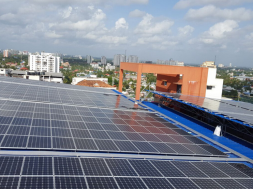
Solar
The utility scale solar segment saw an addition of 4 GW in the first three quarters of 2019 and is expected to add another 4.5 GW in the last quarter. This cumulative capacity of 8.5 GW amounts to nearly 28% y-o-y growth. As per JMK Research estimates, the year 2020 is expected to witness 29% growth with the addition of another 11GW of capacity. Out of this 11GW, 50% of the projects would be installed under central tenders (SECI/ NTPC). Another 1 GW of the solar capacity would be added in open access mode under Group Captive Model mainly in Haryana and Uttar Pradesh.
In terms of state wise allocation, most of the projects likely to be commissioned in 2020 would be located in Rajasthan, Gujarat, Karnataka, Maharashtra and Uttar Pradesh.
Apart from the 11 GW of utility scale solar, nearly 2.5 GW of rooftop/ onsite solar capacity is also estimated in 2020.
Wind
The wind sector expects to add 4GW of capacity in 2020. This would be 50% y-o-y from 2.6 GW added in the year 2019. Of the 2.6 GW, around 1.8 was added in the first three quarters of 2019 and another 0.8 GW would be complete by the end of 2019.
Most of the wind projects allocated in 2018 which were scheduled to commission in 2019 got delayed and are now likely to be commissioned in 2020. This delay is primarily attributed to various land related issues and lack of grid transmission availability.
Figure 1: Annual capacity addition trends of wind and solar in India
Source: JMK Research
Clearly, 2020 is likely the year of growth for RE installations. Political stability for the next five years along with the reduction in safeguard duty, fair price discovery in recent tenders and the introduction of new measures by the Government would bring in the desired push for the industry. Some of these include directives for DISCOMs to issue Letter of Credit (LC) in case of payment delay, and to compensate IPPs for power back down or grid curtailment.
















